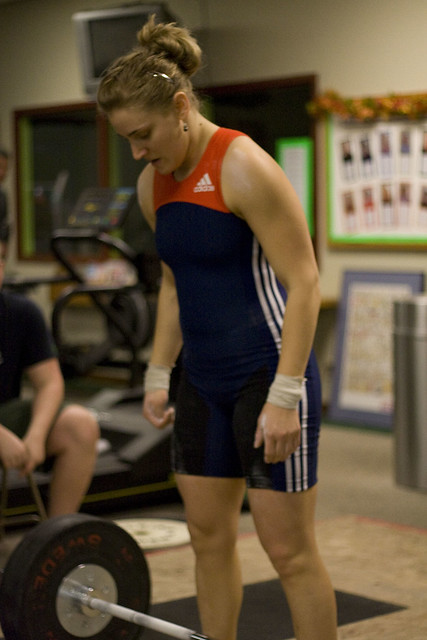Help! I'm being assaulted by large block letters giving me attention-grabbing easily-digestible messages!
All this took was a quick google image search and these pictures were within the first 5 links. Is it possible that there is a new secret to weight loss and losing belly fat every month? Did the one from last month not count anymore?
Let's delve in and see what these magazines advocate.
From Self Magazine this month, we have "One Easy Move to Slim all Over." And it's the exercise that everyone loves to hate: The Plank.
http://www.self.com/fitness/workouts/2011/08/flat-abs-in-5-minutes-slideshow?intcid=trail0725
The form here is correct save one point: It is not proper to smile while planking.
Listen up, crunches and sit-ups: Be jealous - very, very jealous! - of the middle-minimizing powers of the plank....you put a stop to muffin top while also firming your back, butt and shoulders.
Well, they've got one thing right, crunches and sit-ups suck. For many people they'll induce neck pain and even though this can be corrected, why bother when there are a million better ways to do the same job? Here's a fun study on different sit-up and crunch variations:
"Crunches require less effort and less strain on the hip and lower back," Dr. Chong said. Also, interestingly, crunches are harder on the neck. "When the body is vertical (as during a full sit-up), the neck gets a break."
The most strenuous sit-up is a full sit-up from the floor, he said, noting its activation of muscles in the abdomen, back, shoulders, hips and legs."
(From http://www.eurekalert.org/pub_releases/2003-08/mcog-rpv081503.php )
What's this? A sit up doesn't just work just the abdominals? More fun facts: it is actually the hip flexors (More specifically the iliopsoas) that do most of the work in a full sit-up. Use this as an excuse to never do them again.
And crunches...well let's be real. How much effort does it take to do a crunch? How many crunches do you need to do to get any kind of significant calorie burn? How much are the abdominals REALLY getting worked with such a short range of motion? Save yourself some time and do a more efficient exercise.
Getting off the tangent, let's get back to this article and planking. The article gives us a model using proper form and schnazzy work out clothes.
Adjust your arms: Keep them in line with wrists...shrug off the urge to hunch your shoulders to ears, which makes the move harder to hold. You want every belly-firming second!
Get in line: Neck should be long...look a few inches in front of your hands to align head and spine.
Straighten out: A flat back is the key to flat abs. The transverse abdominis engages to stabilize the spine and hold you as stiff as a board. Drop or lift your hips and you let your abs off the hook. Assume the position by a mirror, and do a form check.
This is all great advice for form! With the plank we want to keep our spine in a straight line, and they make sure to point out that this includes the cervical vertebrae of the neck. The way we keep our hips from sagging (And causing some bad lower back pain, which they point out as well!) is by activating our core to keep the hips up. What does 'activate the core' mean? How can you know if you're doing it correctly? Here are some verbal cues I use with my clients to get them to feel what I mean:
-Think about drawing your bellybutton in towards you spine.
-Suck it in like you're trying to put on a pair of jeans that don't really fit anymore. (I'm pretty sure most people can relate to this one.)
-Brace yourself like you're about to get punched in the gut.
A noble effort!
As well, to see if you're doing it right, take Self's advice! Look at yourself in the mirror and check if your spine is straight. Use your phone to record yourself to make sure you keep proper alignment the whole duration. If you're starting to shake in the middle, chances are you're doing it right. Another way some people will skimp on form is by bringing the hips up too high and making the lower body do some of the work. Remember, your entire body is supposed to be stiff as a board, hence the name plank!
However, the amount that you're firming your back, glutes and shoulders is going to be minimal. In my first post I mentioned that I hate the word toning and it simply means losing fat and gaining muscle; the exact same things apply to the word 'firm.'
We then get a lot of assorted plank variations that will work the different abdominal muscles. These are all core exercises to be certain. They include a combination of isometric (Contracting muscles in a static position, such as in a normal plank.), multi-planar (Such as in the "Sculpting Sweep.") and single-planar (Such as the 'Perfect Pike" or "Play it Straight.") movements.
But there are still a few things that irk me about articles like this. How often are you supposed to do these exercises? Why are you supposed to do them? Why am I not getting the promised cinched waist and flat abs from doing these exercises? Should I do this month's exercise suggestions to get flat abs or last month's?
Self suggests to "Spend five minutes most days" doing these various exercises. If you're just starting out, chances are you won't be able to do these exercises 'most days.' Your abs will be so sore by the next day you probably won't be able to do it again for at least a week. On the opposite side of the spectrum, what do you do when these exercises get too easy? How do you progress?
If I was to give suggestions, for a novice instead of spending a workout doing exercises targeting one area, try a total-body routine and mix up the different muscle groups. This will prevent you from feeling too sore to function in your arms, or abdominals or quadriceps, etc. For someone more advanced who is no longer feeling challeneged, add weight. For some reason the magical numbers for dumbbell weight is 5 to 8 in most magazines. What weight you use is going to be different for every person. Some people can't handle any, while 8 pound would be almost the same as using nothing to others. Try doing the plank with a weight plate on your back. Alternatively, you can move the plank down to your elbows or challenge yourself to hold one for 3 to 5 minutes.
(Adding weight to your plank can help achieve this as well as simply practicing planks for duration. As we pointed out in the first post increasing your strength will make doing something lighter for endurance easier)
Correct form for the elbow plank with a straight spine with proper hip alignment, baggy T-shirt, frowning face full of pain and messy apartment.
What's the difference between this month's and last months suggestions? Probably not much. It will just be more variety of core and abdominal exercises, which is good to mix up your routine with and keep things challenging. Obviously though there will be a good amount of overlap; with at least 5 magazines giving "Flat Ab" exercises every month there's bound to be some repeats.
Why are you not going to actually get flat abs from these exercises? I'll give another very important point that is CONSTANTLY gotten wrong by trainers, magazines, and infomercials and applies equally to men and women:
THERE IS NO SUCH THING AS SPOT REDUCTION. The only way to reduce body fat in a specific area is to reduce fat overall. Doing a million abdominal exercises will not specifically reduce your belly fat.
Find yourself using this machine in hopes of trimming those thighs? Don't be surprised when it doesn't work.
Whew. Good to get that off my chest. So this point has a silver lining: This means that even if you spend a day doing upper body work, if you're achieving fat loss you'll be reducing body fat in the lower body as well. Of course, there can still be areas that are stubborn and want to hold the majority of your fat: typically the hips and thighs for women and the midsection for men. This does not mean that fat will not be reduced in these areas!
Want to know the exercise that is "One Easy Move to Slim All Over," or the exercise that will "Flatten Your Abs in 4 Easy Steps"?
There isn't one. There is no easy exercise that will accomplish any of this. You could try squatting though. That's a good start.
















